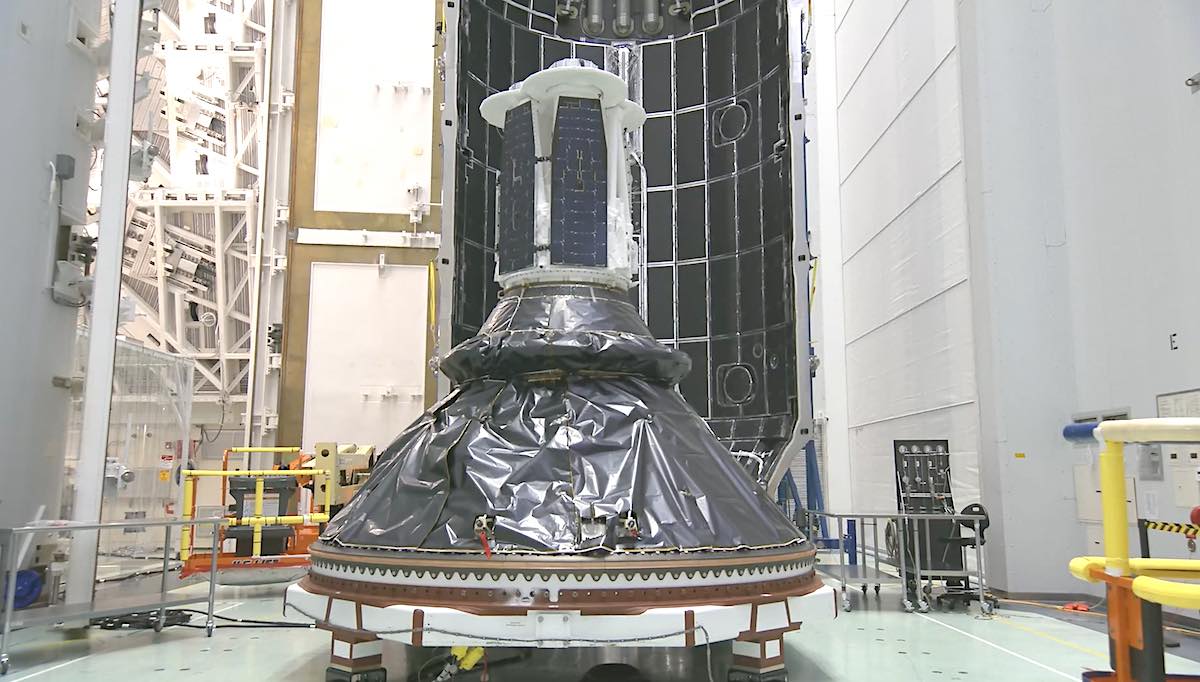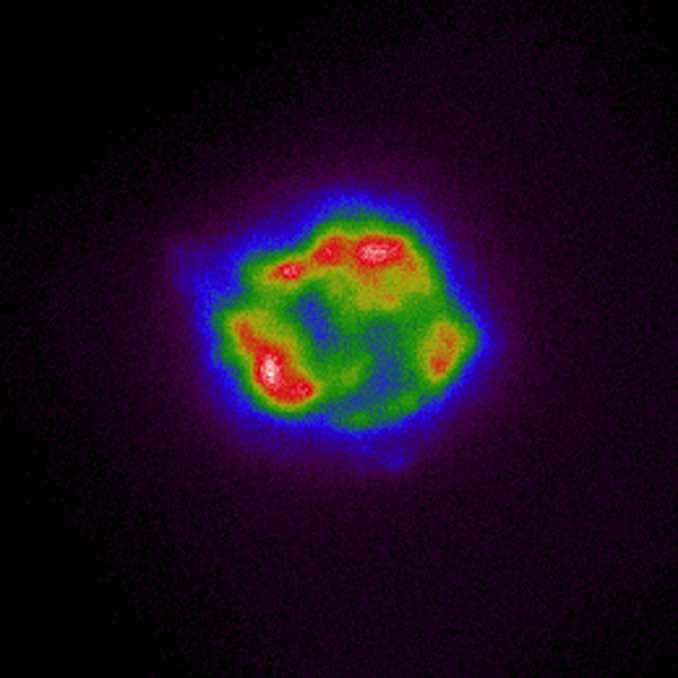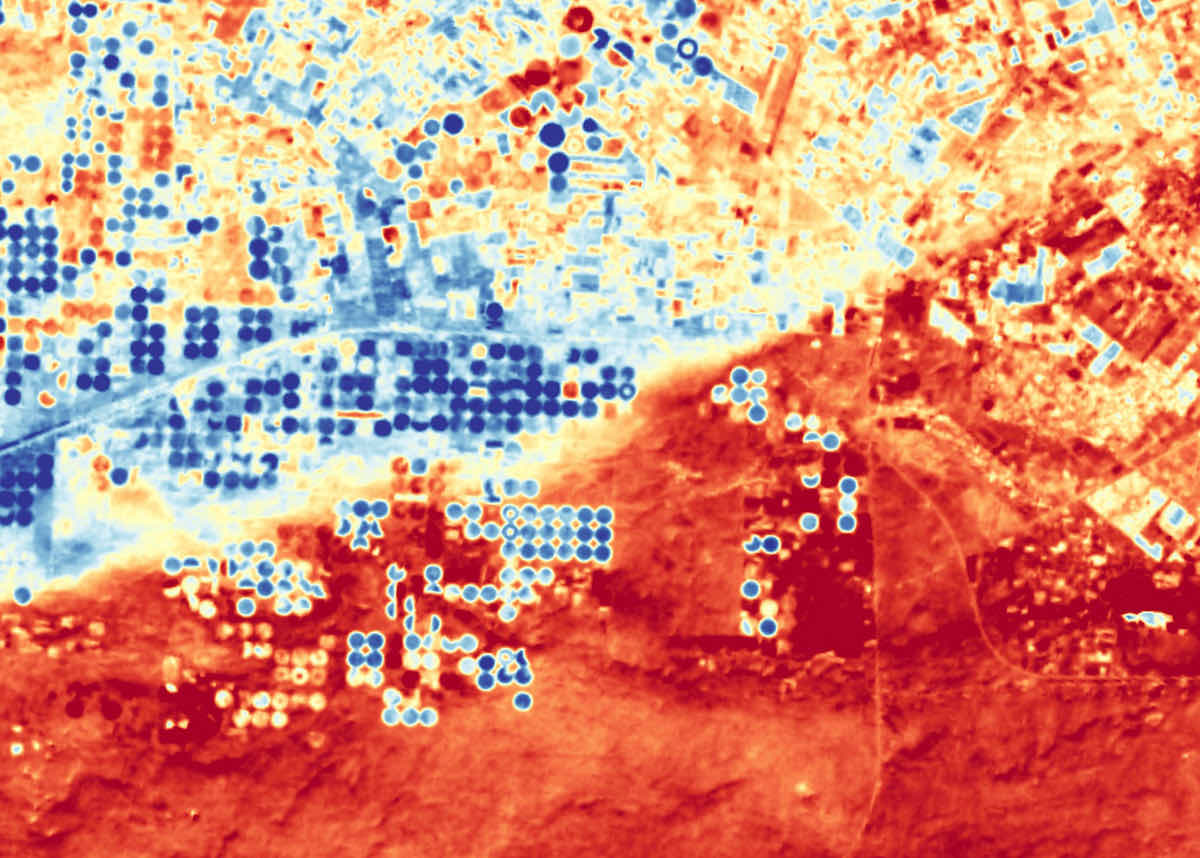Space News & Blog Articles
Landsat 9 declared operational, IXPE returns first science imagery
 This image of the supernova remnant Cassiopeia A combines some of the first X-ray data collected by NASA’s Imaging X-ray Polarimetry Explorer, shown in magenta, with high-energy X-ray data from NASA’s Chandra X-Ray Observatory, in blue. Credits: NASA/CXC/SAO/IXPE
This image of the supernova remnant Cassiopeia A combines some of the first X-ray data collected by NASA’s Imaging X-ray Polarimetry Explorer, shown in magenta, with high-energy X-ray data from NASA’s Chandra X-Ray Observatory, in blue. Credits: NASA/CXC/SAO/IXPE
Two NASA satellites launched late last year are operational and returning imagery — one looking back at planet Earth and another peering into the cosmos in search of new insights into the remnants of dead stars.
NASA’s Imaging X-ray Polarimetry Explorer, or IXPE, mission has returned data from the first of at least several dozen celestial targets mapped out for two years of primary science observations.
IXPE, which launched Dec. 9 from Florida on a SpaceX Falcon 9 rocket, started its science observations last month. On Feb. 14, NASA released the first imagery from the $214 million astronomy mission.
The mission’s first target was Cassiopeia A, or Cas A, a giant debris cloud surrounding a super-dense skeleton of a dead star around 11,000 light years away. Cassiopeia A formed when a star estimated to be five times more massive than the sun exploded in a violent supernova. The light from that event reached Earth around 350 years ago.
The explosion shot matter from the star’s interior out into space in all directions at nearly the speed of light, leaving behind the star’s collapsed core. IXPE’s data will help astronomers study the magnetic field around the neutron star by observing the X-ray glow from nearby gas heated by the explosion.
The observatory observed Cassiopeia A for about three weeks. Cassiopeia A was the first of 33 planned science targets selected for the first year of IXPE’s mission, according to Martin Weisskopf, IXPE’s principal investigator from NASA’s Marshall Space Flight Center.
One composite image released by NASA combines X-ray data gathered by the Chandra X-ray Observatory with measurements from IXPE. Chandra, which launched in 1999, is much larger than IXPE and offers sharper views of distant X-ray sources.
Chandra’s first image was also of Cassiopeia A, NASA said, revealing a combat object at the center of the luminous cloud to be a neutron star or black hole.
“The IXPE image of Cassiopeia A is as historic as the Chandra image of the same supernova remnant,” Weisskopf said in a statement. “It demonstrates IXPE’s potential to gain new, never-before-seen information about Cassiopeia A, which is under analysis right now.”
 NASA’s Imaging X-ray Polarimetry Explorer spacecraft ready for encapsulation inside the payload fairing of its SpaceX Falcon 9 rocket before launch in December. Credit: NASA
NASA’s Imaging X-ray Polarimetry Explorer spacecraft ready for encapsulation inside the payload fairing of its SpaceX Falcon 9 rocket before launch in December. Credit: NASA
IXPE is sensitive to X-ray in a new way.
It’s the first space mission tuned to measure the polarization signal of X-ray light. Similar previous telescopes, which must be in space to detect cosmic X-rays, have imaged X-ray sources in high angular resolution, measured their spectroscopy, or chemical fingerprints, and studied the time variation of X-ray signals.
“By doing this mission, we are adding two variables to the astrophysics toolkit to understand these sources,” Weisskopf said before IXPE’s launch. “That’s the degree of polarization, and the direction associated with polarization.”
The polarization of X-ray light a measurement of the direction of its electromagnetic field, a telltale signal that can inform astrophysicists about the extreme environments around black holes and supermassive objects, including the supermassive black hole at the center of the Milky Way galaxy.
IXPE’s three identical telescopes can measure the energy, position, time of arrival, and polarization of each X-ray photon they collect. The spacecraft, made by Ball Aerospace, extended a boom about a week after launch in December to configure the telescopes for observations.
Flying in an equatorial orbit roughly 373 miles (600 kilometers) above Earth, IXPE is a partnership between NASA and the Italian Space Agency, which provided the mission’s X-ray detectors and a ground station Kenya to receive science data from the satellite when it flies overhead.
IXPE will help astronomers measure the spin rate of back holes, using polarization data to determine the energy from an X-ray source.
The mission will also look at the supermassive black hole at the center of our galaxy, known as Sagittarius A*. IXPE’s measurements may confirm whether the black hole was much brighter just a few hundred years ago, as some scientists believe.
IXPE will also look at more distant targets, such as blazers at the centers of other galaxies. Blazars have powerful jets of radiation that happen to be aimed directly at Earth.
The mission will also study the polarization of X-rays coming from magnetars, which have the strongest magnetic fields of any star, some one thousand trillion times more intense than Earth’s magnetic field.
 This image from NASA’s Imaging X-ray Polarimetry Explorer maps the intensity of X-rays coming from the observatory’s first target, the supernova remnant Cassiopeia A. Colors ranging from cool purple and blue to red and hot white correspond with the increasing brightness of the X-rays. The image was created using X-ray data collected by IXPE between Jan. 11-18. Credits: NASA
This image from NASA’s Imaging X-ray Polarimetry Explorer maps the intensity of X-rays coming from the observatory’s first target, the supernova remnant Cassiopeia A. Colors ranging from cool purple and blue to red and hot white correspond with the increasing brightness of the X-rays. The image was created using X-ray data collected by IXPE between Jan. 11-18. Credits: NASA
The Landsat 9 remote sensing satellite, meanwhile, is now operational after several months of post-launch commissioning since its liftoff Sept. 27 from California aboard a United Launch Alliance Atlas 5 rocket.
The mission is a joint project managed by NASA and the U.S. Geological Survey. Landsat 9 is the newest in a line of remote sensing satellites developed by NASA and USGS, providing a continuous, unbroken stream of imagery of Earth’s land surfaces since 1972.
“The imagery from Landsat 9 is fantastic,” said Del Jenstrom, Landsat 9 project manager at NASA’s Goddard Space Flight Center. “I am incredibly proud of our joint agency and contractor team for executing a very thorough and highly successful on-orbit commissioning campaign, bringing this important mission into operational status.”
Ground teams maneuvered Landsat 9 into an orbit just below that of its predecessor, Landsat 8, to cross-calibrate the new satellite’s mapping camera and infrared survey instrument. Satisfied with Landsat 9’s good performance, managers announced Jan. 31 that the new spacecraft would begin regular operational imaging. Data from Landsat 9 became publicly available Feb. 10.
 his natural color image of the San Francisco Bay was captured by Landsat 9’s new Operational Land Imager 2 instrument. Landsat 9 which launched Sept. 27, 2021, is now in its operational phase. Credit: NASA/USGS Landsat
his natural color image of the San Francisco Bay was captured by Landsat 9’s new Operational Land Imager 2 instrument. Landsat 9 which launched Sept. 27, 2021, is now in its operational phase. Credit: NASA/USGS Landsat
Landsat 9 flies in a polar orbit about 438 miles (705 kilometers) above Earth, collecting visible and thermal infrared imagery used to track changes in land cover, water quality, glacier flow, and other properties of Earth’s surface. The thermal infrared data from Landsat satellites — essentially measurements of heat coming from Earth’s surface — provide information on irrigation and water usage.
Scientists and forest managers use Landsat data to measure the impact of wildfires and chart the growth of cities, making the Landsat satellites “something like a Swiss Army knife,” said Jeff Masek, NASA’s project scientist for the Landsat mission.
One method of calibrating Landsat 9’s instruments involved pointing the satellite toward the full moon, a steady source of light. The testing since Landsat 9’s launch also confirmed the satellite’s Thermal Infrared Sensor 2, or TIRS 2 instrument, is not afflicted with the same problems with stray light that degraded some infrared images from Landsat 8, according to NASA.
Landsat 9, like Landsat 8, takes medium-resolution wide-area pictures. The two satellites working in tandem will cover all of Earth’s land masses every eight days.
“The Landsat user base is eager to get another observatory that will double the frequency with which they can get this high-quality data,” Masek said in a statement. “This is really going to benefit research in areas like snow cover, crop monitoring and water quality.”
Landsat 9 will also work in concert with other land imaging satellites, such as the European Sentinel 2 missions, to extend the continuous global coverage of land masses since the launch of Landsat 1 in 1972.
The new Landsat 9 satellite replaces Landsat 7, which is operating well beyond its design life. Landsat 7 will be moved into a different orbit, where it will wait for docking of a NASA robotic satellite servicing mission that will attempt to refuel the aging satellite later this decade.
 Circular irrigated farm fields near Alexandria, Egypt appear in blue in this image captured by the new Thermal Infrared Sensor 2 aboard Landsat 9. TIRS-2 measures surface temperature, so the cool, irrigated fields stand out against the warmer arid lands. Image credit: NASA/USGS Landsat
Circular irrigated farm fields near Alexandria, Egypt appear in blue in this image captured by the new Thermal Infrared Sensor 2 aboard Landsat 9. TIRS-2 measures surface temperature, so the cool, irrigated fields stand out against the warmer arid lands. Image credit: NASA/USGS Landsat
Built by Northrop Grumman, Landsat 9 is designed for a five-year operating life, but could function years longer. Landsat 8, also designed for a five-year mission, earlier this month passed the ninth anniversary since its launch.
NASA said it will hand over command of Landsat 9 to USGS in May. Before then, engineers will complete work on a software update for uplink to the satellite to make its data recorders less susceptible to radiation, an issue identified during recent checkouts.
As of Feb. 10, Landsat 9 had collected more than 57,000 images, and will continue producing at a rate of about 750 images per day, NASA said.
Data from Landsat satellites are provided to users around the world free of charge. NASA says the Landsat archive includes more than 8 million images captured since 1972.
Email the author.
Follow Stephen Clark on Twitter: @StephenClark1.
When you subscribe to the SpaceZE News Feed, we will send you an e-mail when there are new updates on the site so you wouldn't miss them.

